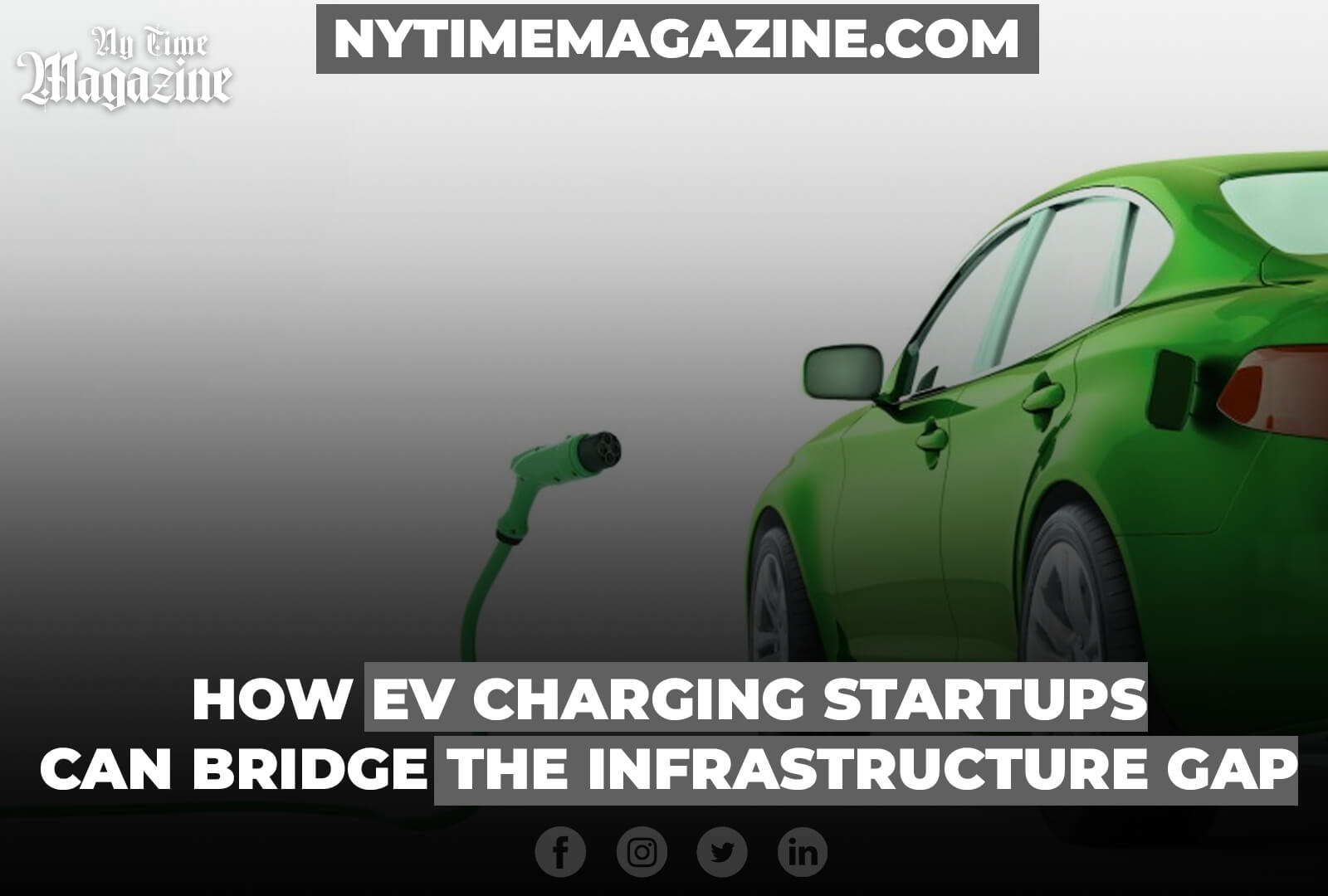The United States has set a lofty goal: by 2030, it aims to have 50% of all vehicles sold be zero-emission. Achieving this ambitious target would put 48 million electric vehicles (EVs) on the road, constituting 15% of the entire vehicle fleet, by 2030. However, there’s a significant challenge to overcome: the lack of EV charging infrastructure. Currently, the U.S. has only 129,598 public and 14,673 private charging ports, according to the U.S. Department of Energy’s alternative fuel locator. To meet the demand, the country needs a staggering 20 times more EV charging infrastructure.
The recent announcement that major automakers, including BMW, Honda, Hyundai, Kia, GM, Mercedes, and Stellantis, are joining forces to build thousands of EV chargers across the U.S. is a promising step toward addressing this issue. These companies plan to establish a joint venture (JV) and invest billions of dollars in expanding public charging stations.
While their plan to deploy 30,000 fast charging stations in urban and highway areas is a significant advancement, it still falls short of solving the distribution problem. Currently, the charging network is heavily concentrated in states like California, which boasts 29% of all chargers in the country, and cities along the East and West Coasts. Government funding is directed toward charger placement along dedicated corridors to reach rural and remote areas, but there’s still a considerable gap to fill.
President Biden’s infrastructure bill allocates $7.5 billion to construct 500,000 new chargers by 2030, a substantial leap forward. This initiative has already spurred significant investments in U.S. manufacturing facilities and plans for over 100,000 additional chargers. However, it’s clear that more needs to be done to meet the projected demand for 1.2 million chargers by 2030.
The EV charging gap is not unique to the U.S. Other countries worldwide are grappling with similar challenges. In Europe, there are around 7.5 million electric cars on the roads, and Germany, for instance, allocated 5.5 billion euros for EV charging infrastructure. The U.K. faces its own challenges, with a target of 1,170 charging stations per 100 km by 2030, but the current growth rate suggests that only a quarter of that number will be realized by 2032.
As EV adoption soars in Asia, the region’s charging infrastructure is also rapidly expanding, with the Asia-Pacific charging station market expected to reach $69.9 billion by 2029. China, in particular, is leading the way with 300,000 charging ports installed in 2022, surpassing U.S. developments.
India is another market experiencing remarkable growth in the EV industry, with registered EVs tripling to 1.01 million between 2021 and 2022. Indian state refiners have plans to establish EV charging facilities at over 22,000 fuel stations and highways by 2024, and the private sector is set to contribute significantly to the country’s EV infrastructure.
With such a significant gap between supply and demand for EV chargers, there are ample opportunities for EV charging startups to make a meaningful impact in this space. While the EV charging market is competitive and challenging, startups with innovative value propositions and cutting-edge technology can thrive with the right strategies.
Here are some ways startups can improve the charging ecosystem:
1. Utilize AI for Smart Energy: AI can optimize charging demand, distribution, and scheduling, ensuring efficient use of energy resources. This intelligent system can balance the grid, charge EVs during off-peak times, and provide a user-friendly experience.
2. Apply Charging Analytics and Data Insights: Predictive maintenance using data-driven insights can minimize downtime and ensure the reliability of charging stations.
3. Design Flexible Charging Solutions: Develop hardware and charging standards that promote compatibility and convenience for all EV users, accommodating different standards that may coexist in various regions.
4. Target the Global Market: Create solutions that adapt to various hardware types, ensuring widespread appeal and usability across different regions.
5. Leverage Government Funding: Explore opportunities for government funding to accelerate growth and create added value for investors. Nondilutive funding can be a valuable resource for EV startups.
6. Address Distribution Gaps: Focus on hard-to-reach locations and underserved areas to promote equitable access to charging infrastructure, complementing the efforts of larger initiatives.
7. Understand the Customer: Tailor charging solutions to meet the unique needs and preferences of EV users, whether for public or home charging.
8. Offer Multiple Payment Options: Provide a variety of payment methods, such as apps, RFID cards, and contactless payments, to accommodate different payment preferences.
Launching a startup in the EV charging sector can be challenging, with lengthy sales cycles and numerous stakeholders to navigate. However, startups have a crucial role in facilitating the mainstream adoption of EVs by overcoming the charging infrastructure obstacles.
Widespread EV adoption is on the horizon, but without a robust charging network, EV drivers will face limitations. Startups, in collaboration with industry stakeholders, government entities, and charging network operators, can work together to create a seamless charging infrastructure that supports the growing number of EVs on the road.
Frequently Asked Questions
1. What are EV charging startups, and how do they contribute to the growth of electric vehicles (EVs)?
- EV charging startups are companies that focus on developing innovative solutions for EV charging infrastructure. They contribute to EV growth by expanding and improving charging networks, making EVs more accessible and convenient for users.
2. How does the current EV charging infrastructure in the United States compare to the projected demand for EVs by 2030?
- The current infrastructure falls significantly short of meeting the projected demand. To accommodate the expected increase in EVs, the U.S. needs to develop approximately 20 times more charging stations.
3. What role does government funding play in supporting EV charging startups, and how can they leverage these resources effectively?
- Government funding, such as that provided by President Biden’s infrastructure bill, is crucial for startup growth. Startups can leverage these resources by aligning their initiatives with government goals, focusing on areas of need, and demonstrating innovation.
4. How can AI technology optimize EV charging demand, distribution, and scheduling for a more efficient and user-friendly experience?
- AI can analyze data to predict optimal charging times, balance the grid, and ensure energy efficiency. This results in a user-friendly experience with reduced wait times and lower costs.
5. What challenges do startups face when entering the competitive EV charging market, and how can they differentiate themselves with innovative solutions?
- Startups face challenges like long sales cycles and competition. They can differentiate by offering unique value propositions, such as advanced technology or focusing on underserved areas.
6. Why is it crucial to address the distribution gaps in the U.S. EV charging network, and what opportunities do startups have in this regard?
- Addressing distribution gaps is vital for equitable access and widespread EV adoption. Startups can fill these gaps by targeting hard-to-reach locations, ensuring access for all.
7. What strategies can startups employ to ensure their charging solutions cater to the needs and preferences of both public and home charging users?
- Startups should offer flexible solutions that consider various charging needs, including public and home charging, and focus on user-friendly designs and payment options.
8. How do predictive maintenance and data-driven insights enhance the reliability and uptime of EV charging stations?
- Predictive maintenance uses data insights to schedule maintenance proactively, minimizing downtime and ensuring charging stations are reliable and operational.
9. What are the advantages of offering multiple payment options for EV charging, and how can startups implement these payment methods effectively?
- Offering various payment options, such as apps, RFID cards, and contactless payments, caters to diverse user preferences and enhances the convenience of charging.
10. How can EV charging startups contribute to the broader goal of transitioning EVs into the mainstream and alleviating range anxiety for drivers?
- Startups can expand charging networks, making EVs more accessible and reducing range anxiety. Their innovations play a crucial role in making EVs a practical choice for more drivers.



